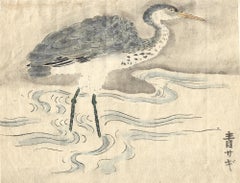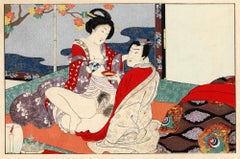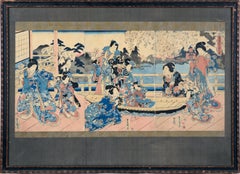Edo Art
1920s Edo Art
Ink, Handmade Paper
1980s Edo Art
Ink, Handmade Paper
Mid-19th Century Edo Art
Ink, Watercolor, Handmade Paper, Laid Paper
1860s Edo Art
Paper, Ink
Mid-19th Century Edo Art
Ink, Handmade Paper, Woodcut
1850s Edo Art
Paper, Ink, Woodcut
Late 19th Century Edo Art
Watercolor, Handmade Paper, Woodcut
1960s Edo Art
Ink, Handmade Paper
Mid-20th Century Edo Art
Handmade Paper, Woodcut
Mid-20th Century Edo Art
Paper, Ink
1990s Edo Art
Ink, Washi Paper, Woodcut
Late 19th Century Edo Art
Wood, Lacquer
1850s Edo Art
Woodcut
1850s Edo Art
Paper, Pigment, Woodcut
Early 19th Century Edo Art
Paper, Ink, Woodcut
1860s Edo Art
Woodcut
19th Century Edo Art
Paper, Woodcut
Mid-18th Century Edo Art
Watercolor, Handmade Paper, Woodcut
Late 19th Century Edo Art
Silk, Paper, Watercolor
1920s Edo Art
Paper, Ink, Woodcut
Late 19th Century Edo Art
Watercolor, Handmade Paper, Woodcut
Late 19th Century Edo Art
Watercolor, Handmade Paper, Woodcut
18th Century Edo Art
Wood, Paint
Late 19th Century Edo Art
Watercolor, Handmade Paper, Woodcut
Early 19th Century Edo Art
Watercolor, Handmade Paper, Woodcut
Late 18th Century Edo Art
Watercolor, Handmade Paper, Woodcut
1880s Edo Art
Paper, Ink, Woodcut
1890s Edo Art
Ink, Rice Paper, Woodcut
1850s Edo Art
Paper
Mid-20th Century Edo Art
Lithograph
1850s Edo Art
Woodcut
Early 19th Century Edo Art
Paper, Ink, Woodcut
1840s Edo Art
Printer's Ink, Mulberry Paper, Woodcut
Early 20th Century Edo Art
Ink, Rice Paper, Woodcut
1860s Edo Art
Ink, Rice Paper, Woodcut
Early 19th Century Edo Art
Ink, Rice Paper, Woodcut
1850s Edo Art
Paper, Ink, Woodcut
1860s Edo Art
Paper, Ink
Late 18th Century Edo Art
Ink, Wood Panel, Rice Paper
1920s Edo Art
Paper, Ink, Woodcut
1880s Edo Art
Paper, Ink, Woodcut
Late 19th Century Edo Art
Bronze
1820s Edo Art
Ink, Rice Paper, Woodcut
1760s Edo Art
Woodcut, Ink, Rice Paper
1860s Edo Art
Woodcut
1860s Edo Art
Paper, Ink, Woodcut
Late 18th Century Edo Art
Paper, Ink, Woodcut
1950s Edo Art
Ink, Handmade Paper
1780s Edo Art
Woodcut
Mid-19th Century Edo Art
Woodcut
1830s Edo Art
Woodcut
Mid-19th Century Edo Art
Woodcut
1990s Edo Art
Ink, Washi Paper, Woodcut
1860s Edo Art
Ink, Rice Paper, Woodcut
Late 18th Century Edo Art
Woodcut, Rice Paper
Late 19th Century Edo Art
Watercolor, Handmade Paper, Woodcut
Early 19th Century Edo Art
Ink, Rice Paper, Woodcut
Mid-18th Century Edo Art
Watercolor, Handmade Paper, Woodcut
Early 19th Century Edo Art
Watercolor, Handmade Paper, Woodcut
1860s Edo Art
Rice Paper, Woodcut



